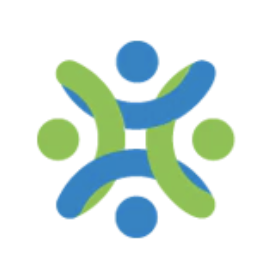
The 2020-2021 school year began in the same fashion as the previous school year ended; with a Zoom call. There wasn’t any fanfare, celebrations, or excitement, just a link to a Zoom session. Sadly, like so many children across the country, my oldest daughter missed her 5th grade promotion ceremony. She didn’t get a chance to say goodbye to friends who were moving on to different schools or to teachers she had known for the past six years. As parents, my wife and I felt helpless, unable to provide a silver lining or a positive aspect to this experience.
The months that schools went remote are some of the most critical of the entire school year. The end of the school year usually brings about summative assessments that can be used as baselines for the coming year. While standardized testing was suspended for the 2019-20 school year, so were most localized assessments that give teachers valuable data on the progress their students made throughout the school year. As a parent, I was in the dark as to where my children were on the learning continuum. I didn’t know their reading level. I didn’t know if they were behind in Math or ahead of the curve.
Online learning in the spring was rough, and in many districts, not received well by students or parents. Most school systems had little to nothing in place in order to pivot teachers and students to remote learning. Furthermore, many students lacked learning devices and other infrastructure to facilitate the ability to access online learning. Many school districts took several weeks to get up and running. It was clear that in many schools and districts the goal was to get through the school year, to not provide new instruction, and to just reinforce academic concepts that were already taught. There was a collective effort to just hold on until June.
"The longer educators wait to fill in these learning gaps, the harder it will be for students to achieve their best academically, and may struggle in school."
Like many parents, I scrambled to provide my students a variety of learning tools over the summer to prevent further COVID academic sliding. I signed my children up for different online programs targeting Math and ELA concepts. Other parents I know turned to tutors to help bolster their children’s content knowledge from the last several months of lost instructional time.
As we transition from summer to fall, students will once again “head” back to school. Some students are beginning the school year remotely, while others are back to in-person instruction with safety measures in place. Regardless of the format, teachers are operating without their normal data systems in place. Teachers usually begin the school year with test scores and levels of their students based off of spring assessments. These scores help teachers better understand their new students and to plan differentiated instruction activities. This fall, schools will need to assess the levels of students quickly in order to get baseline data to start the year.
While it is ideal that students take assessments at school to prevent off-task behavior and cheating in order to get an accurate level, we must acknowledge that millions of students will need to take these assessments online. This shift will require educators to redirect the conversation regarding assessment from students obtaining a score or ranking to giving educators the ability to truly understand what each student knows and where they need more support. It will not do a student any good if their parent is sitting next to them, helping to answer problems correctly in order for their child to get a higher score. In doing so, teachers will be able to streamline the instructional process by focusing more time on concepts that their students are struggling with and not spend time on concepts that they have already mastered.
One such tool that can be administered remotely is easyCBM®.
There are many assessments that can be used to meet this need, but one in particular lends itself as a good solution. easyCBM is available for remote administration, provides immediate feedback that can be used to adjust instruction, and – as the name suggests – is easy to setup and administer. easyCBM provides benchmark assessments and many types of progress monitoring instruments. Available for grades kindergarten through 8th grade, easyCBM can provide focus on areas where skills are weak and monitor improvement as instruction is adjusted.
By administering non-high stake assessments, such as easyCBM, teachers can understand what learning was potentially lost during the spring in order to fill in the gaps in the fall. If not, students will continue to be missing important skills and concepts. This is especially important in the primary grades as students are learning foundational skills that they build upon for years to come. The longer educators wait to fill in these learning gaps, the harder it will be for students to achieve their best academically, and may struggle in school.
These learning gaps are exacerbated by inequities within our school systems and communities. Students who have access to technology, academic support at home from their parents, and a dedicated place to work, were at an advantage over students who lacked proper devices and Internet access, who didn’t have a parent at home who could help them, and didn’t have a quiet, dedicated place from them to work. It is critical that we support these students now to ensure their success.
Have questions or suggestions for how your school is trying to diagnose the learning gap? We’d love to hear from you in the comment section below.





